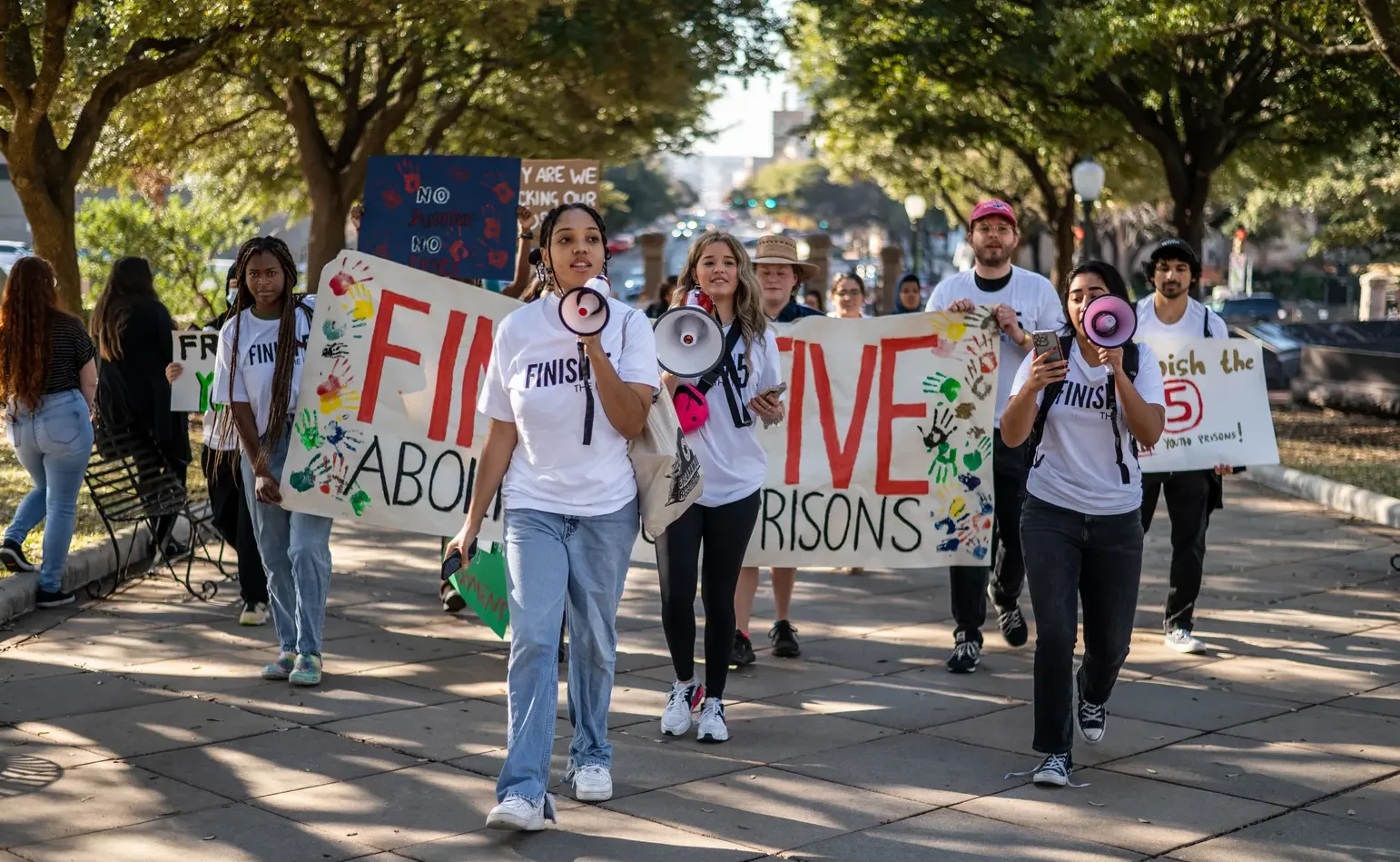Texas Teens Embark On Quest To Shut Down Texas’ Last 5 Youth Prisons

Photo above: Members of the Finish the 5 Coalition march to the Texas Capitol on Jan. 10, 2023. The youth-led group gathered to advocate for closing youth prisons in Texas. Credit: Sergio Flores for The Texas Tribune
Spurred by reports of inhumane conditions at Texas Juvenile Justice Department facilities, Austin-area teenagers are lobbying the Legislature to reform the system.
BY JOLIE MCCULLOUGH, JAN. 18, 20231, Texas Tribune
Brimming with adrenaline, determination and wide-eyed optimism, a group of teenagers gathered outside the state Capitol last week, ready to take their first steps into the underbelly of Texas politics.
Most had been under the iconic Pink Dome only for school field trips. But on the first day of the Texas legislative session, the dozen or so high schoolers and recent graduates were eager to take on a more active role: demanding their elected representatives address the ongoing crisis within the state’s youth prisons.
Last year, The Texas Tribune reported on severe understaffing in the prisons that routinely left children inside cells alone for up to 23 hours a day, forcing them to use water bottles and food trays as toilets. Almost half of the nearly 600 kids in the prisons had been on suicide watch.
In response, the Austin-area teens joined up with a local criminal justice reform group to create a new advocacy campaign. Named Finish the 5, the youth-led coalition plans to spend the next five months at the state Capitol, urging lawmakers to close Texas’ five remaining juvenile prisons.
“If we as youth are not standing in solidarity with our fellow youth who are experiencing violence at the hands of the state, then who will stand for them?” Krupali Kumar, the 19-year-old co-founder of the Austin Liberation Youth Movement, shouted into a microphone last Tuesday at the Capitol’s southern gate.
The Texas Juvenile Justice Department’s prisons have been entrenched in repeated scandals of sexual abuse, physical abuse and other mistreatment for decades. But they’ve also changed significantly after such crises in the past.
After a sexual abuse scandal in 2007, the agency was rebranded and restructured to merge with local juvenile justice systems. A new focus aimed to keep kids in trouble closer to home under county supervision, largely in probation or diversion programs. Following the policy shift and a drop in juvenile arrests, far fewer kids were sent to state lockups, and the number of youth prisons shrank from 13 to the remaining five, located mainly in rural areas.
State officials have previously dismissed ideas to close more, however, because the hundreds of youth still detained there are often the most difficult to manage and care for, often because of violent behavior, severe mental health needs or both.
The push by the Finish the 5 campaign, led by the young people and social justice advocacy group Texas Center for Justice and Equity, proposes phasing out the five prisons by 2027. Instead, the prison funding would go to counties to better handle difficult youth populations, as well as implement better intervention and prevention programming to keep kids out of cells in the first place.
Though closing all juvenile prisons would be a dramatic change, the young activists are hopeful the dire conditions will propel substantive reforms, similar to what happened after the 2007 scandal. Big changes are especially up for grabs since TJJD this year is undergoing a decennial review for lawmakers to decide whether and how to continue its existence.
So far, the agency’s response to the crisis has largely been to implement emergency raises and push for more salary funding to entice new employees and help retain some of its fleeing workforce.

